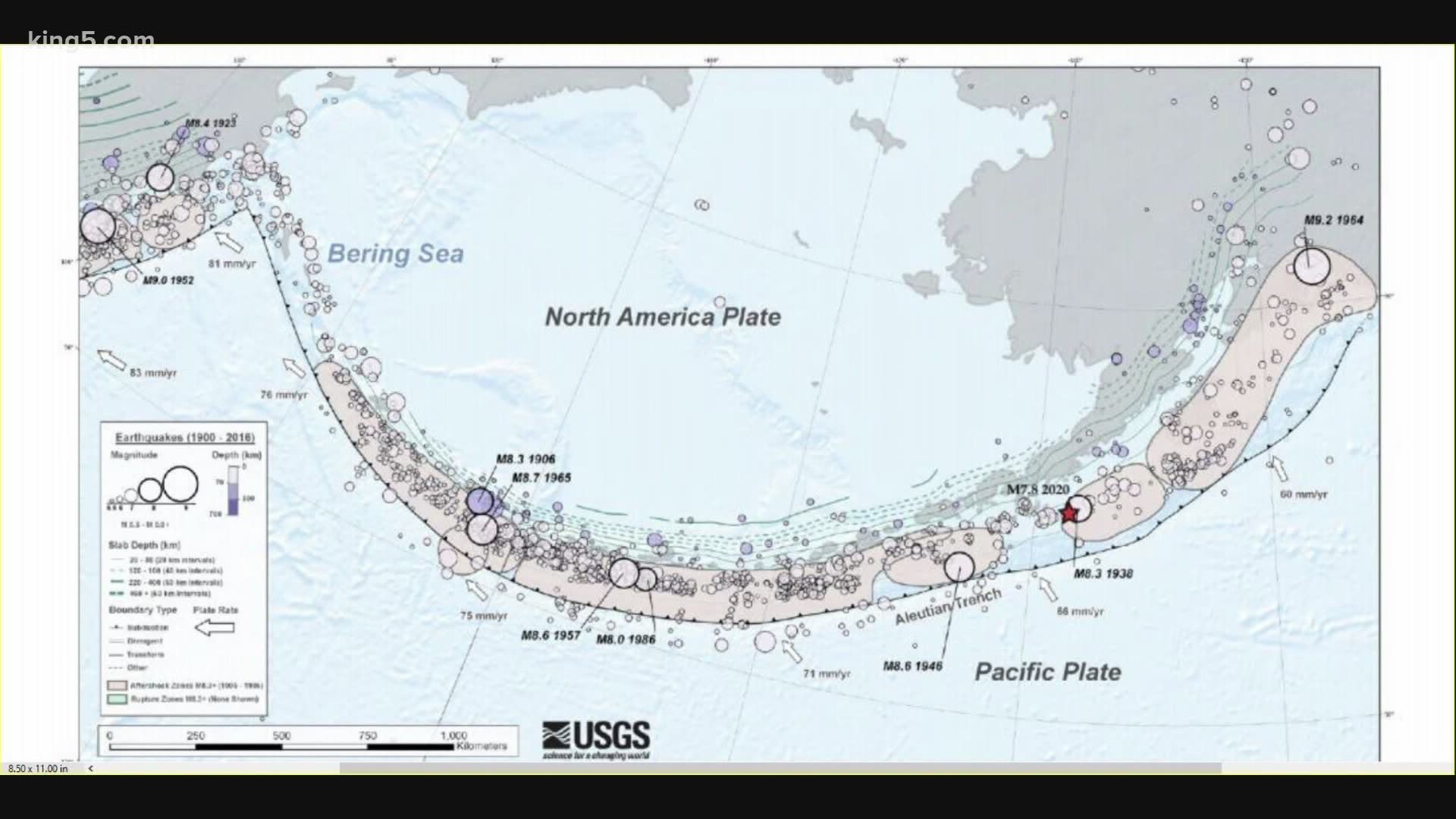ANCHORAGE, Alaska — A powerful earthquake off Alaska’s southern coast jolted coastal communities and forced residents to briefly scramble for higher ground over fears of a tsunami.
There were no immediate reports of damage late Tuesday in the sparsely populated area of the state affected by the earthquake.
The tsunami warning was canceled after the magnitude 7.8 quake off the Alaska Peninsula produced a wave that was less than a foot high. The quake was centered about 65 miles offshore.
Strong shaking was reported by residents in communities within 100 miles of the epicenter. Some people in Anchorage about 500 miles away also reported feeling the earthquake.
It's no surprise some Alaskans headed for higher ground as tsunami sirens sounded, given the history of earthquakes in Alaska.
The Great Alaskan Earthquake in 1964 centered near Anchorage was the second-largest quake ever recorded. The 9.2 magnitude quake wobbled the Space Needle and the tsunami that followed it killed people as far away as Oregon and California.
Washington has a big tsunami risk from giant quakes generated off our own coast, what's called the Cascadia Subduction Zone. But a quake generated tsunami from Alaska can also strike us in the northwest.
Experts said this week's quake in Alaska was large, but by the nature of the quake and its size, did not trigger a tsunami.
"It's a largish earthquake, but in tsunami generation world, it's not very big," said Paul Bodin, who manages the Pacific Northwest Seismic Network at the University of Washington.
Like 1964, the most recent quake happened in the Aleutian Trench, but hundreds of miles further west from the 1964 quake. Experts said it's a busy area for big quakes.
And like the Aleutian Trench, the quakes happen when crustal plates under the ocean floor, locked to a land bearing plate above, suddenly give way.
The greater frequency of these Alaskan quakes helps scientists understand the signals to look for before the next one strikes.
"That allows you some predictive ability about what we can expect from the next plate boundary earthquake here," said Bodin.
But even now, the collision between locked crustal plates are making the land in western Washington move a little bit higher and further to the east every year, like compressing a spring.
RELATED: Steps you can take to be prepared for natural disasters and emergencies

